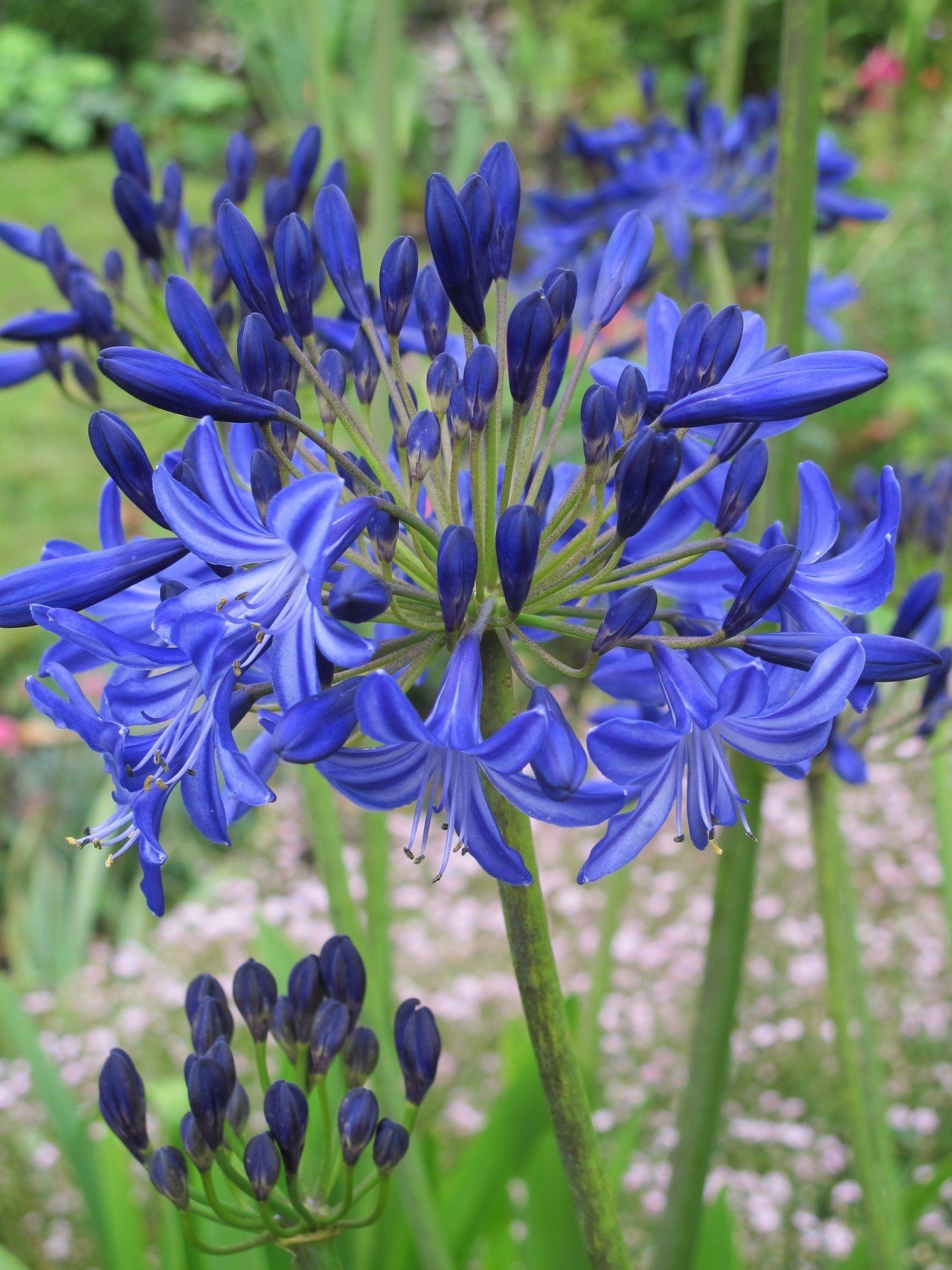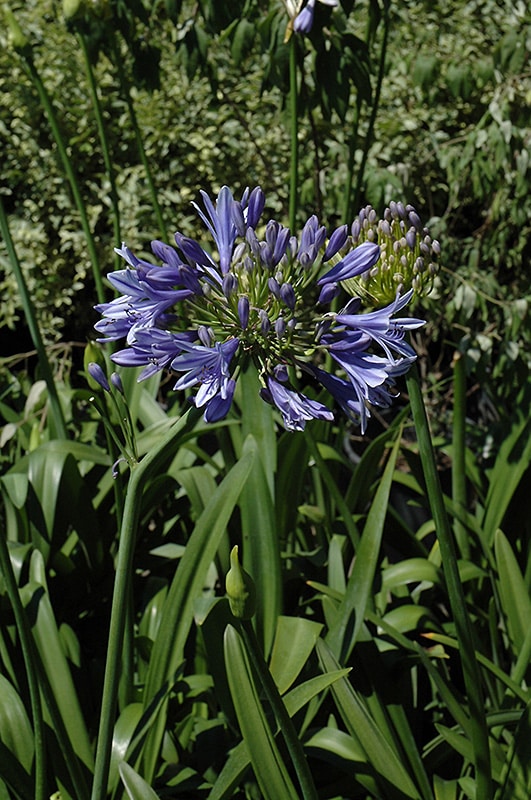Agapanthus Breeding: Tips for Expanding Your Plant Collection
Agapanthus Breeding: Tips for Expanding Your Plant Collection
Blog Article
Understanding the Art of Agapanthus Care: Vital Actions for Healthy Growth and Vivid Flowers
In the realm of cultivation, the cultivation of agapanthus stands as a rewarding endeavor for those that seek to nurture these sophisticated blooming plants. From selecting the ideal range to grasping trimming techniques, the journey in the direction of growing prospering agapanthus plants is multifaceted and holds the key to unlocking the full potential of these herb gems.

Selecting the Right Agapanthus Variety

When selecting the appropriate Agapanthus range for your yard, consider elements such as environment suitability, blossom color, and growth routine. Agapanthus, generally known as Lily of the Nile or African lily, is available in a range of colors ranging from shades of purple and blue to white. Pick a blossom shade that complements your existing garden combination to create an unified landscape. In addition, take into consideration the environment in your area to ensure the Agapanthus variety you pick can flourish in your certain problems. Some selections are more tolerant of cold temperatures, while others choose warmer climates. Comprehending the growth practice of different Agapanthus varieties is critical for correct positioning within your yard. Some selections have a clumping development behavior, perfect for boundaries or containers, while others have an even more spreading nature, suitable for ground cover or mass growings. By carefully assessing these elements, you can select the best Agapanthus range to boost the charm of your yard.
Perfect Growing Problems
Taking into consideration the ideal ecological demands is essential for effective Agapanthus cultivation. Agapanthus plants are delicate to cold temperatures and ought to be shielded from frost throughout wintertime months.
To make sure healthy and balanced growth and dynamic blossoms, plant Agapanthus light bulbs at a depth of regarding 2-4 inches and room them 8-12 inches apart. Including organic issue, such as garden compost, to the soil can boost drain and fertility, advertising durable origin growth. Mulching around the base of the plants aids preserve moisture and reduces weed development. Normal watering is essential, particularly throughout the expanding season, to keep the soil constantly wet however not waterlogged.
Watering and Feeding Tips
Keeping correct dampness degrees and giving essential nutrients are crucial elements in the care routine for Agapanthus plants. It is essential to strike a balance when it comes to watering Agapanthus. These plants like constantly moist soil but are susceptible to root rot if overwatered. During the growing period, water deeply as soon as a week, making sure the dirt is well-draining to avoid waterlogging. In hotter environments or during periods of dry spell, more constant watering might be required to keep the dirt equally damp. Nevertheless, reduce watering in the winter season to avoid waterlogged problems.
Fertilizing Agapanthus is crucial for advertising healthy and balanced growth and prolific blooms. Apply a balanced plant food, such as a 10-10-10 formula, in the early click this site spring as brand-new development arises. By following these watering and fertilizing ideas, you can guarantee your Agapanthus plants flourish and generate vibrant, resilient blossoms.
Trimming Methods for Agapanthus
Trimming Agapanthus plants at the proper times and with proper methods is critical for keeping their health and promoting ideal development and flowering. The perfect time to prune Agapanthus is in late winter months or very early spring before new development arises. Beginning by removing any yellowing or dead fallen leaves near the base of the plant. Cut them as short as feasible without harming the emerging shoots.
For flowered stems, wait till the blossoms have actually perished and afterwards cut them back to the base. This not just cleans up the plant's appearance however likewise urges the development of new flower buds. Deadheading spent blossoms can additionally reroute the plant's energy into producing more blooms instead than establishing seeds. However, if you wish to collect seeds for breeding, leave some blossoms to dry and mature on the plant.
Remember to utilize tidy, sharp devices to make accurate cuts and lower the risk of presenting diseases. Agapanthus. Normal pruning will assist maintain your Agapanthus looking healthy and balanced and cool while making sure a bountiful display of beautiful blossoms
Taking Care Of Common Bugs and Diseases
After making advice sure proper pruning strategies for Agapanthus, it is crucial to attend to common parasites and illness that can influence the health and wellness and vitality of these plants. Agapanthus plants are generally sturdy however can still fall target to particular issues. One common bug that affects Agapanthus is the Agapanthus gall midget. This small, orange fly lays its eggs in the foliage, leading to altered growth and flower buds that fall short to open. To battle this parasite, trim and destroy any type of affected plant parts and take into consideration utilizing insecticidal soap.
Another common issue is fungal leaf spot, which presents as dark sores on the fallen leaves. To stop fungal conditions, make certain excellent air blood circulation around the plants, prevent above watering, and eliminate any type of infected leaves quickly. In addition, Agapanthus plants can experience origin rot if they are planted in badly draining soil. To avoid this, plant Agapanthus in well-draining soil and prevent overwatering. By being cautious and taking prompt activity versus insects and diseases, you can aid your Agapanthus plants thrive and produce dynamic blossoms.

Final Thought
Finally, mastering the art of agapanthus care involves picking the right selection, giving optimal growing conditions, appropriate watering and feeding, proper trimming techniques, and resolving typical pests and illness. By following these important steps, you can guarantee healthy development and dynamic flowers for your agapanthus plants. Remember to on a regular basis check and preserve your plants to advertise their overall health and durability.
To ensure healthy and balanced development and dynamic flowers, plant Agapanthus light bulbs at official statement a depth of about 2-4 inches and area them 8-12 inches apart. By following these watering and fertilizing tips, you can guarantee your Agapanthus plants prosper and produce dynamic, durable flowers.
One usual parasite that impacts Agapanthus is the Agapanthus gall midget. In addition, Agapanthus plants can experience from root rot if they are planted in inadequately draining pipes dirt. By following these necessary steps, you can make certain healthy growth and dynamic blooms for your agapanthus plants.
Report this page